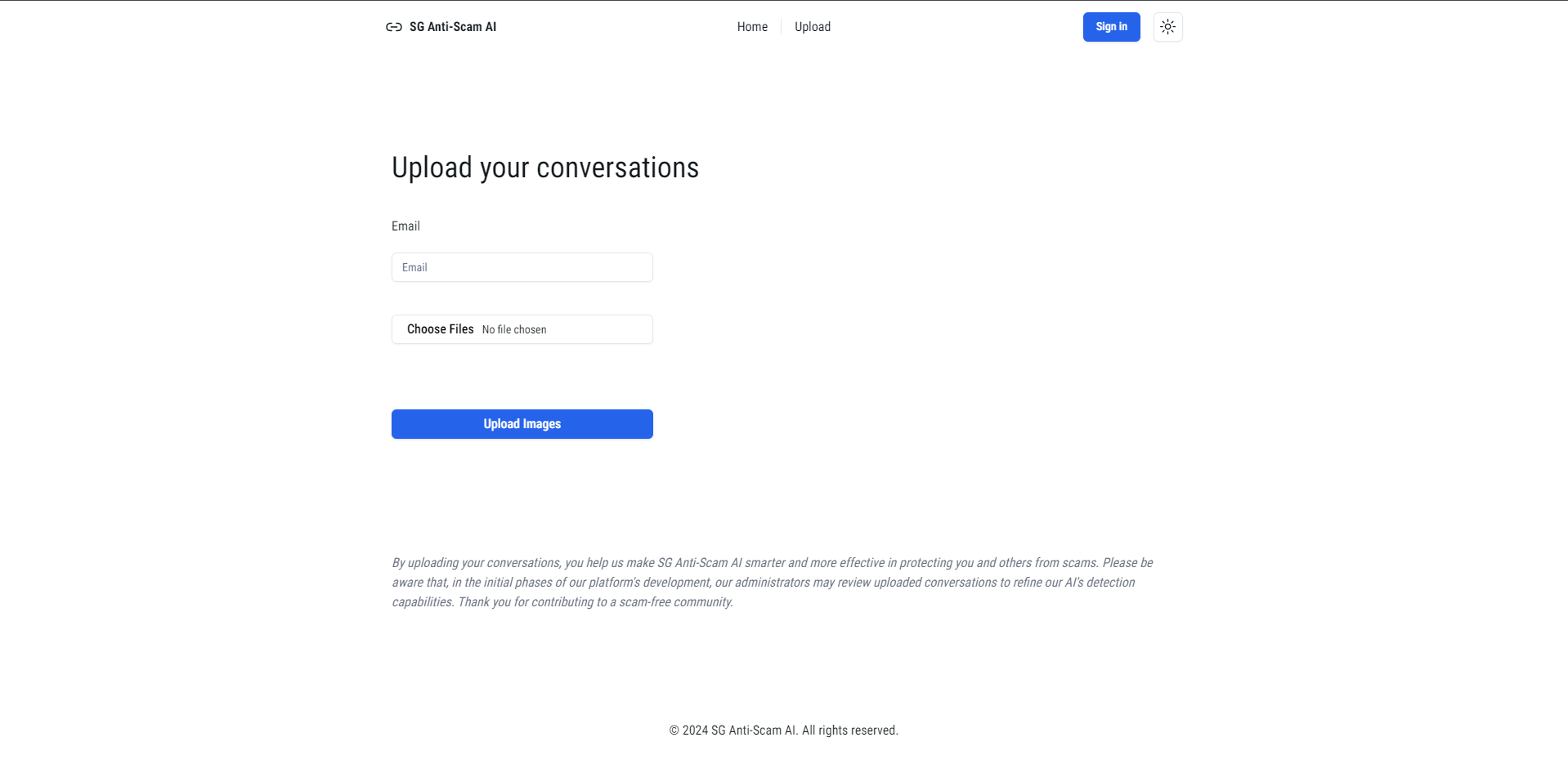SG Anti-Scam AI

❓About
Anti-Scam AI SG is a cutting-edge full-stack web application designed to combat online scams by allowing users to upload images of their conversations with buyers or sellers for scam detection. Leveraging a sophisticated blend of Microsoft Azure, Robotic Process Automation (RPA), GPT-Vision, and GPT-4, the platform extracts and analyzes conversation flows, converting them into JSON format for further evaluation. An innovative scoring system, powered by LangChain LLM and hosted on Docker, evaluates the scam likelihood, utilizing a Pinecone vector database for enhanced accuracy through similarity search. The application provides real-time feedback to users via automated emails based on the AI-determined scam score and features dynamic, scalable architecture with dedicated dashboards for both admins and users, facilitating interaction and continuous learning from user feedback to refine and enhance accuracy and user experience.
📤 Upload Conversations

Simply upload images of your conversation between your seller and buyer and key in your email as shown.

✉️ Receive An Email Report Within Seconds

Receive a customised email detailing the risk level determined based on our AI model.
⚛ Technical Stack

Front End
- Purpose: User interface for uploading conversation images and interacting with scam detection results.
- Technologies: NextJS.
Back End
- Microsoft Azure: Cloud storage solution for hosting uploaded images and application data.
- Robotic Process Automation (RPA): Automates the extraction of images from Azure blobs for processing.
- GPT-Vision: Analyzes the flow of conversations from images, extracting meaningful content.
- GPT-4: Processes the extracted conversation content, structuring it into a JSON format for further analysis.
AI Scoring and Database
- LangChain LLM (Language Model): Hosted on Docker, evaluates conversations for scam likelihood, generating an AI score between 0 to 1.
- Pinecone: A vector database that enhances accuracy through similarity search, connected to LangChain LLM for efficient data retrieval and scoring accuracy improvement.
Notifications and User Feedback Loop
- Email System: Depending on the AI score, customized emails are sent to users, informing them about the scam analysis results.
- User Dashboard: Allows users to view, flag, or unflag their conversations based on their experiences, contributing to the system's continuous learning and accuracy enhancement.
- Admin Dashboard: Enables administrators to oversee submission, interact with users' uploads, and manually adjust flags for scam detection accuracy improvement.
Infrastructure
- Docker: Used for containerizing the LangChain LLM, ensuring portability and scalability across development and production environments.
🤖 RPA Process Flow

1. User Submission
- Users upload screenshots of their conversations along with their email address.
2. Image Processing and Conversion
1.1:Load files from Blob Storage 1.1.2:Utilize GPT Vision for image processing.1.3:Convert image to text format.1.4:Prompt for score output from an AI engineer.
3. JSON Output and Fraud Analysis
- Output the conversation in JSON format.
1.6:Provide examples of similar conversation data.1.7:Retrieve response for fraud analysis.1.8:Compile submission data into JSON.
4. Scam Detection Scoring and Knowledge Ingestion
1.9:Upload JSON files to Azure Blob Storage 2.- Continue fraud analysis via GPT-4.
1.8.1:Ingest knowledge into the system.1.8.2:Vectorize new submission using DENSE via OpenAI embeddings.1.8.3:Store vectorized data in vectorDB (Pinecone).
5. Retrieval and Scoring
1.5:Perform similarity search with Retrieval Augmented Generation (RAG).
6. User Notification and Interaction
- Send an email to the user with the AI-determined scam score.
7. Human in the Loop and Feedback
2.0:Involve a human (admin or user) in the loop for oversight.2.1:Use Admin/User dashboard to flag or review submissions, handling false positives/negatives.